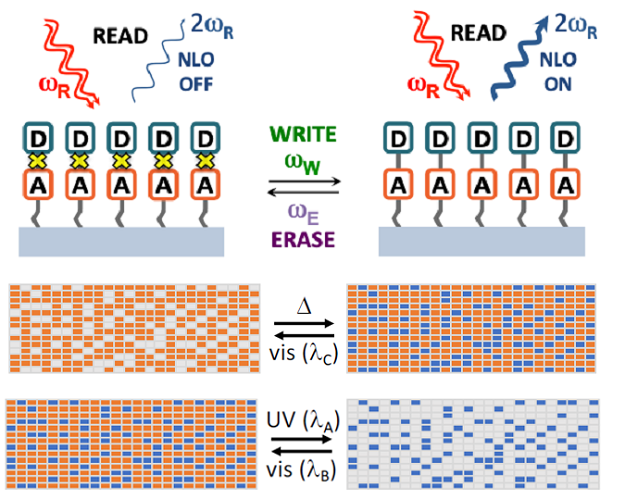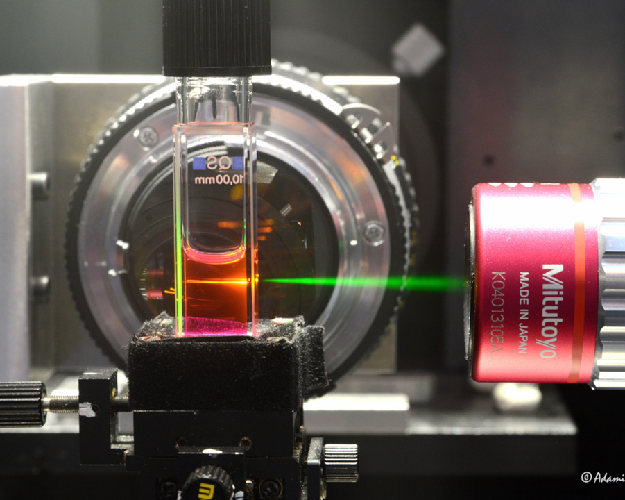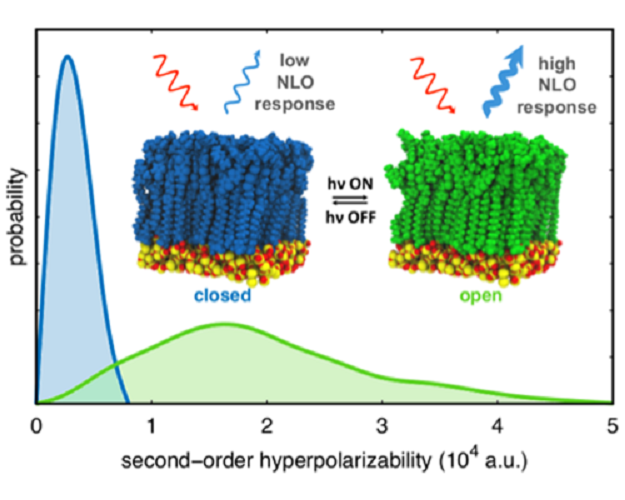
Elaboration of organic photochromes with high NLO contrast
This task is devoted to the synthesis and characterization of NLO photo-switchable compounds. The strength of the donor or acceptor terminal units are modulated to tune the absorption properties of the compounds, their SHG responses and relaxation rates. The best candidtaes are then be selected for surface functionalization.
- Task Leader : Émilie Genin

Elaboration and optimization of functionalized surfaces
This task consists in the design of surfaces functionalized with NLO switches. Surfaces with different chromophore concentration are elaborated and fully characterized. Three main figures of merit are addressed: i) the reversibility of the switching process, i.e. the targeted systems should show neither writing- nor reading-induced fatigue after a large number of illumination steps, ii) the amplitude of the SHG response of the NLO active state, and iii) the SHG contrast between the NLO active and inactive states (readability of the ON/OFF states).
- Task Leader : Luc Vellutini

Spectroscopic characterization
The reproducible, relatively rapid and sensitive measurement of the optical properties of the SAMs in their different switching states are technical challenges. All the WRITE/ERASE and READ, optical processes will be performed in situ on a single multimodal setup that will be specifically designed.
- Task Leader : Vincent Rodriguez

Numerical simulations
A computational approach combineing molecular dynamic (MD) simulations and DFT calculations is used to provide a fundamental understanding of the functionalized surfaces. MD simulations give access to the morphology of the NLO-active layer at the atomistic level, and enable the exhaustive statistical sampling of the multiple geometrical conformations spanned by the chromophores at the surface. Then, DFT calculations performed on individual molecular fragments extracted from the MD trajectories provide a molecular interpretation on how dynamical geometry distortions, induced by thermal and steric effects, impact the SHG responses of both states of the SAM.
- Task Leader : Frédéric Castet
